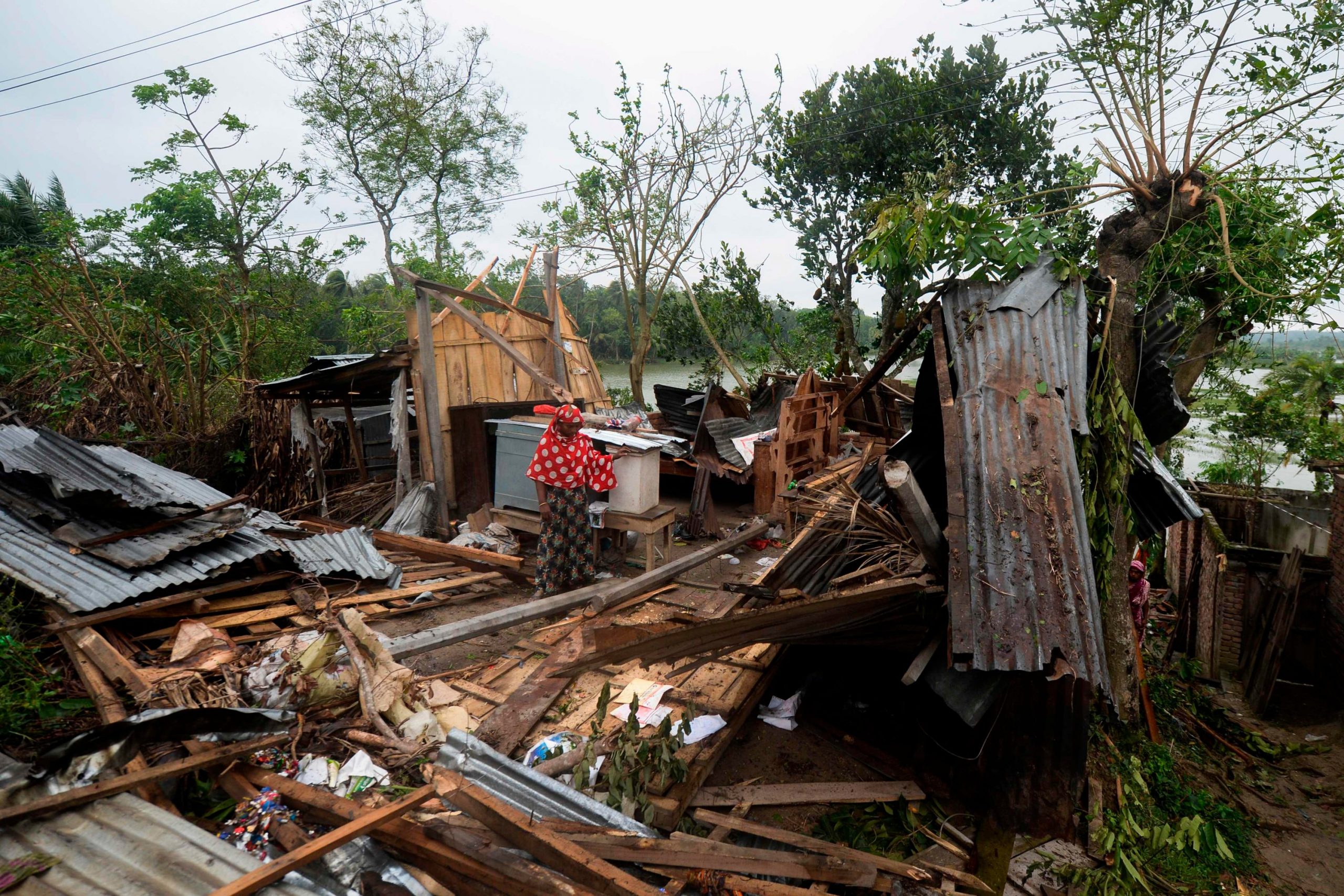Wide swaths of coastal India and Bangladesh were flooded and millions were without power Thursday as Cyclone Amphan, the most powerful storm to hit the region in more than a decade, killed over 80 people and cut a path of destruction that is still being assessed.
Many parts of the Indian metropolis of Kolkata, home to more than 14 million people, were underwater, and its airport was closed briefly by flooding. Roads were littered with uprooted trees and lamp posts, electricity and communication lines were down and centuries-old buildings were damaged.
Officials in both countries said the full extent of the damage caused by the cyclone was not known because communications to many places were cut. Hundreds of thousands of people were evacuated ahead of the storm, a process complicated by the coronavirus pandemic.
Amphan came ashore Wednesday with heavy rain, a battering storm surge and sustained winds of 170 kph (105 mph) and gusts up to 190 kph. It devastated coastal villages, knocking down mud houses, tearing down utility poles and uprooting trees.
“The roofs of many homes have flown away and the streets are waterlogged,” said Shuli Ghosh, who runs a cafe in Kolkata.
Indian Prime Minister Narendra Modi said authorities were working to get all possible assistance to victims of the cyclone.
“No stone will be left unturned in helping the affected,” he tweeted.
At least 74 people were killed in India, with most of the deaths in West Bengal state, which includes Kolkata. Broadcasters in Bangladesh reported 13 deaths in the country.
More than 1 million people remained without electricity in Bangladesh, where hundreds of villages were flooded.
Shelters were unable to run at full capacity in many places due to the coronavirus and some people were too scared of the risk of infection to go there.
The pandemic also will affect relief efforts and recovery. Damage from the storm is likely to have lasting repercussions for the poor, who are already stretched to the limit by the economic impact of the virus.
In India’s Odisha state, the cyclone destroyed crops of betel, a leaf used as a wrapper for chewing areca nut or tobacco. In Bangladesh’s southwestern district of Bagerhat, more than 500 fish farms were flooded.
Debashish Shyamal, who lives in a fishing village along the West Bengal coast, took shelter with his family in a government clinic. He said the wind blew open the windows and doors and for hours they huddled inside, drenched by the torrential rain.
On Thursday, he discovered dangling electricity wires, waterlogged streets and an uprooted forest.
“There is nothing left,” he said.
Last Updated on May 21, 2020 5:36 pm










Discussion about this post